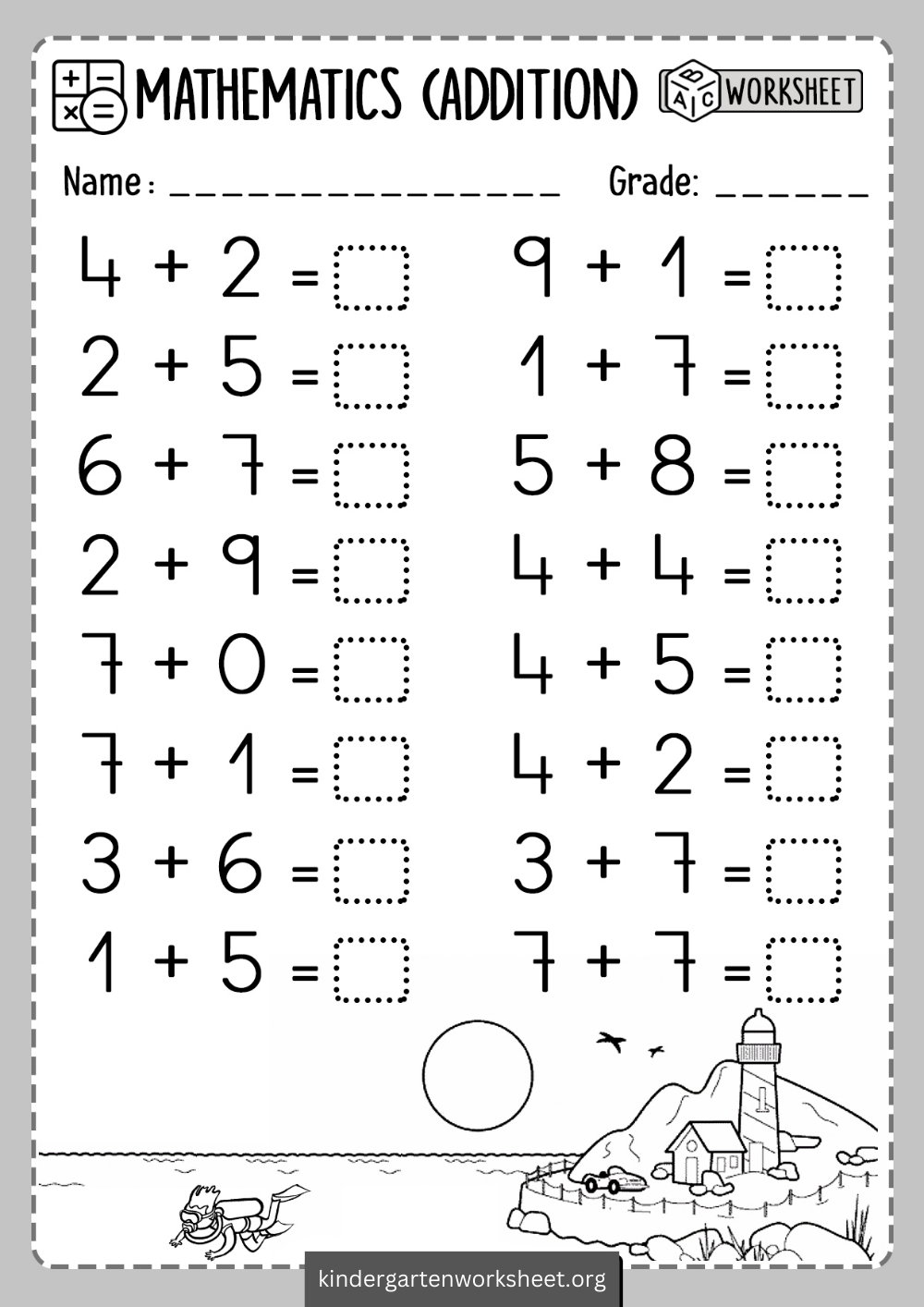Kindergarten is a crucial phase in a child’s educational journey where foundational skills are established, setting the stage for further academic success. Among these essential skills, mathematics plays a vital role in shaping a child’s cognitive development. Specifically, the concept of addition forms a cornerstone for mathematical understanding. To facilitate effective and engaging learning, printable adding worksheets offer a valuable tool for kindergarten educators and parents alike.

The Significance of Kindergarten Addition
Addition is more than just the act of combining numbers; it lays the groundwork for a child’s understanding of number relationships, basic operations, and problem-solving. Through addition activities, kindergarteners learn to count, recognize numerical patterns, and develop critical thinking skills.
Why Printable Worksheets?
Printable adding worksheets offer a dynamic and versatile resource for both educators and parents to impart foundational addition skills in an interactive manner. They possess several advantages:
- Accessibility and Convenience: Printable worksheets can be accessed anytime, anywhere, eliminating the need for a stable internet connection. This flexibility allows parents and teachers to integrate learning seamlessly into a child’s routine.
- Customization: Printable worksheets can be tailored to suit the specific needs and learning pace of each child. Educators can select worksheets that match a child’s proficiency level, gradually progressing to more challenging tasks.
- Variety: The abundance of printable adding worksheets available caters to diverse learning styles. Whether it’s visual learners, auditory learners, or kinesthetic learners, there are worksheets designed to engage every child effectively.
Designing Engaging Printable Adding Worksheets
Creating effective and engaging printable adding worksheets involves more than just presenting numbers on a page. Here are some key considerations:
- Visual Appeal: Kindergarteners are drawn to colorful and visually appealing materials. Incorporate vibrant images, playful graphics, and inviting fonts to make the worksheets visually engaging.
- Real-Life Scenarios: Integrate real-life scenarios that resonate with a child’s experiences. For example, use objects like fruits, toys, or animals to help children relate to the addition concept more easily.
- Interactive Elements: Add interactive elements like matching exercises, puzzles, and drawing spaces. These elements transform the worksheet from a passive learning tool to an active exploration platform.
- Progressive Complexity: Begin with simple addition tasks and gradually increase the complexity. This progressive approach helps build confidence and prevents children from feeling overwhelmed.
Printable Adding Worksheets: A Collaborative Learning Tool
The effectiveness of printable adding worksheets is enhanced when they are used as a collaborative learning tool. Both parents and educators play pivotal roles in this process:
- Parental Involvement: Parents can engage their children in fun and educational activities at home. By using printable adding worksheets, parents can reinforce classroom learning, spend quality time with their children, and foster a positive attitude towards math.
- Educator’s Guidance: Teachers can incorporate printable adding worksheets into their lesson plans. These worksheets can serve as valuable assessments of a child’s progress and help teachers tailor their instruction to suit individual learning needs.
Conclusion
In conclusion, printable adding worksheets are a powerful educational resource for building essential addition skills in kindergarten students. Their accessibility, adaptability, and engaging design make them an invaluable tool for both educators and parents. By leveraging the benefits of these worksheets, we can nurture young minds, lay a strong mathematical foundation, and set our children on a path of successful learning.

